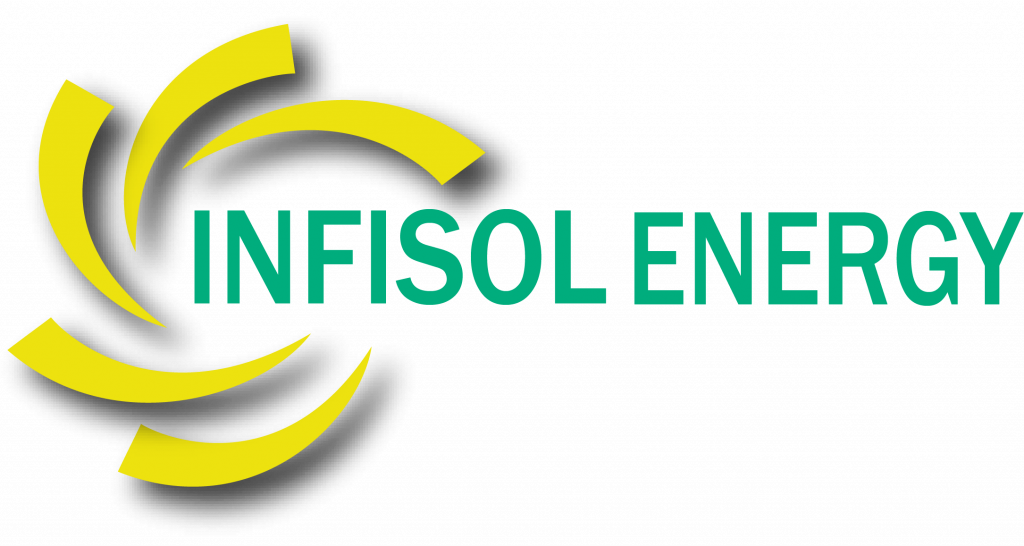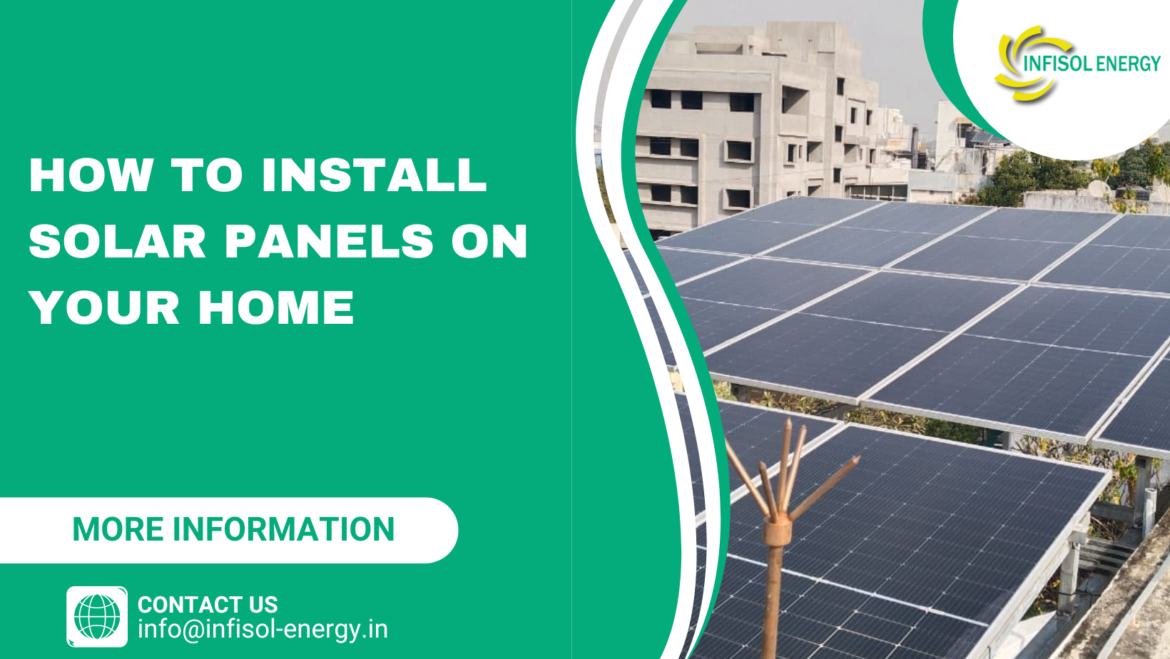Installing Solar panels in your home can reduce your electric bill effectively. But, How to Install Solar Panels on Your Home? Don’t Worry!
This extensive guide begins with a complete process overview. We will discuss the advantages of an independent solar setup.
From component selection to installation planning, we’ll handle it all. We will explain all you need to know to start your solar adventure and generate clean, green energy from home.
Why Build Your Solar Power System at Home?
The solar power system in your house has several advantages. The essential benefit is that it gives better energy control and lessens carbon impression. Second, installing your system is reasonable and may totally save energy bills.
This allows you to change your solar arrangement, which is great. Pick your favourite solar cells, power devices, and accessories to fulfill your energy requests. Your development venture could incorporate solar panels for better portability and crisis power.
Consider installing a solar power system for your home to fulfill your energy requests in a biologically capable and durable technique. It also saves the money and helps the environment.
Components of Home Solar System
Solar panel installation on a solitary family house needs cautious material choice. Since you will install solar panels on top of the home, you should have the fair supplies on your hands. For appropriate rooftop solar system installation, you’ll require the following items:
- Solar panels or modules
- Inverter
- Solar mounting structure
- Lightning arrester
- DC cables and combiner box
- Conduit pipe and cable tray for cable management
- AC cables
- Earthing cables
- Earthing kits
- Electrical components for connections
- MC4 connectors
These solar components are generally common for residential rooftop panel installations.
How to Install Solar Panels on Your Home?
Anyone who wants solar panels for their house must understand the procedure. Knowing all fundamentals simplifies the system setup. Now, we’ll discuss fundamental solar power generation procedures.
Choose the proper Type of Solar Panel
Many believe solar panels are necessary for photovoltaic panel placement. Choose from three panel fixing options. These are some examples:
- Pole Mounts: These have a pole that holds up a single panel.
- Roof Ground mounts: Several roof-ground mounts may tilt panels away from the ground. People are adopting roof-ground mounts increasingly.
- Flush Mount: The basic purpose of a flush mount is to make panel placement straightforward. Setting them up and maintaining them is simple anywhere you place them.
For the most significant reason, thoroughly inspect the solar panel installation site. You may install it after you discover the correct spot. You can determine how many solar mounts you need by measuring the panel placement’s surface area. Keep adding nuts and panels to decide whether you can go ahead.
Estimate Your Roof for Installation
With the correct roof measurement, you can install solar panels easily. Most of your roof should be cloud-free and weatherproof. Make sure the building’s roof is ready before starting construction.
A clean, large roof may accommodate several panels. Before starting, you should measure where you wish to install the solar panels. The solar system installer usually measures the whole roof before beginning installation.
Conduct the conduit
Always carry the pipe over the roof before adding solar energy. After clearing it, you may create the platform.
Build a platform for the Installation
A platform for solar cells is crucial and should be necessary. The foundation supports the panels and ensures proper installation. Besides that, it stops the panels from deteriorating and maintains them in place.
Organise the Panels
Testing the solar panels’ setup is crucial before the final phase. Set up the panels to function with all their positions to achieve this purpose. You can determine how many panels each row needs by looking at the panel arrangement. This is a vital step in connecting electricity and will prevent installation issues.
Electrical Wiring
Installing solar panels requires many processes. Energy will flow correctly to all displays, preventing damage and short circuits. Connecting solar panels requires electrical lines. It’s still essential to wire all solar power system components correctly.
Connect Solar Panels and Solar Inverter
Connect the solar panel’s positive wire to the generator’s positive end to make the system function. Complete the configuration by connecting the solar panel’s negative wire to the generator’s opposing end. The inverter’s input will link to the panel’s output series as in the previous scenario. You must switch off the generator before installing solar panels.
Connect Solar Inverter and Home Electricity
Connecting the generator to the home’s energy supply requires plugging in the board’s primary switch. The electricity line will power every room in the home. If you physically connect the solar panel correctly, you may take the final inspection.
Perform a Final Check
Checking the finished piece follows assembling it. Always check the ends’ joins before the final evaluation. Ensure no system short circuits using this check. No liquids should be present during the final examination. The solar panel installer you choose can assist you in finishing the task.
Enable the Panel
Consider turning on the solar panel after the final test. Turning on the electricity will show whether all panels operate. Check any malfunctioning electrical wire switches. This makes solar cell usage simpler. Turning on the machine lets you utilise it.
Safety Guidelines for Solar Energy System Installation
Installing solar panels properly is crucial. Avoiding issues requires following safety recommendations precisely. Follow these solar panel installation instructions to protect everyone:
- Wear safety gear: Handling large electrical equipment requires suitable protection. Professionals use harnesses, hard helmets, safety glasses, and gloves to prevent falls and injury.
- Use Correct Tools: Before installing the solar system, ensure you have all the tools and equipment. Ensure you have all the components before installing. You can get scaffolding, ropes, harnesses, ladders, and power tools.
- Trun off Power: Always trun off the power while installing solar panels. Disconnecting switches isolate the system or turn off the circuit breaker.
- Secure panels and mounts: This will reduce accidents and property damage. If you secure the panels and mounts, they will resist wind and other adverse conditions.
If you still need to, seek expert assistance. Solar power plant installers have years of experience installing them on residential premises. A licensed specialist must install the panels securely.
Conclusion
Installing solar electricity at home offers several advantages. The benefits are saving money, protecting the environment, and not using outside energy. After following this blog post’s precise procedures, you may gather clean, green energy. The process is simple to grasp and use, whether alone or with specialists.
Directions and safety recommendations are straightforward. To achieve optimum performance, inspect your roof, get the proper components, and conduct the repair nicely. Installing a solar energy system in your home can reduce your carbon footprint and minimise your energy expenditures.
FAQs
Can you install home solar panels yourself?
The answer is yes, but you need experience or professional help to ensure a safe and effective installation.
How many solar panels do I need to run a house?
Twenty to thirty panels are needed for a typical-sized house, depending on energy demand, panel efficiency, and sunlight exposure.
Can we run AC with solar power?
Solar energy can power an air conditioner. However, the system size may need to be adjusted.
Can solar panels work at night?
Solar panels do not produce energy during dark hours since they do not generate electricity from sunlight. A battery-powered storage device can store extra energy from the day in case of load shading. The individual can use this midnight energy later.
Which inverter is best for solar panels?
There are several inverter topologies, including string, micro, and hybrid. Your specific circumstances determine which inverter is best for serving your demands efficiently. Make sure it fits your panel configuration and energy habits before buying.

